by Venchito Tampon Jr | Last Updated on July 6, 2023
What is reverse engineering in SEO?
Reverse engineering (on link building terms) is the process of checking what a certain website has created or acquired from other pages outside their web properties (i.e. from another non-owned website).
This approach has been standard practice in the search marketing space, often executed at the initial phase of the link development campaign to get an idea of the types of links acquired by other websites (i.e. competitors).
Reverse engineering starts by identifying who your competitors are. Some link developers fail to get results from the process because they immediately dive in to export backlink reports to any web page ranking for their target industry keywords.
Identify the right competitors to ensure you’ll derive quality insights and reports from your reverse engineering activity.
Types of Competitors to Get Backlinks From
1. Generic Competitors
These are competitors who directly compete with your products or services.
For agencies, it is best to ask your clients who their competitors are before or at the start of working on their link building campaigns.
In most cases, their competitors are the ones they are competing with for industry head terms (check their head term on the meta title on the site’s homepage).
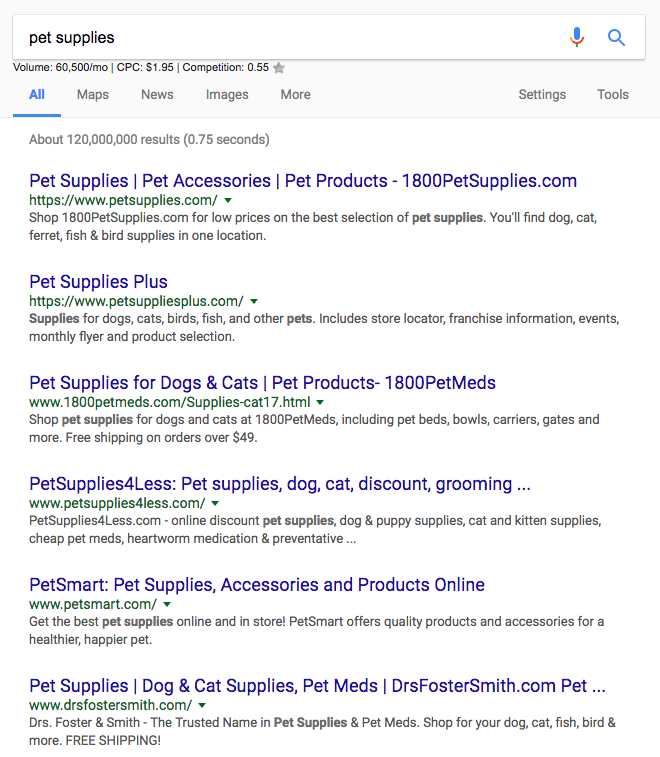
When using Ahrefs, it is best to use the domain-level feature to only look at all of the links to a competitor’s domain.
There’s also an option to remove links pointing to subdomains (e.g. blog.domain.com), but this would filter out some relevant link opportunities, so I recommend you choose the “domains with subdomains” level.
2. Category Competitors
These are pages competing for secondary keyword terms (categories). For example, if you’re selling incontinence products, these are your category competitors who are competing for the industry term “incontinence supplies”:
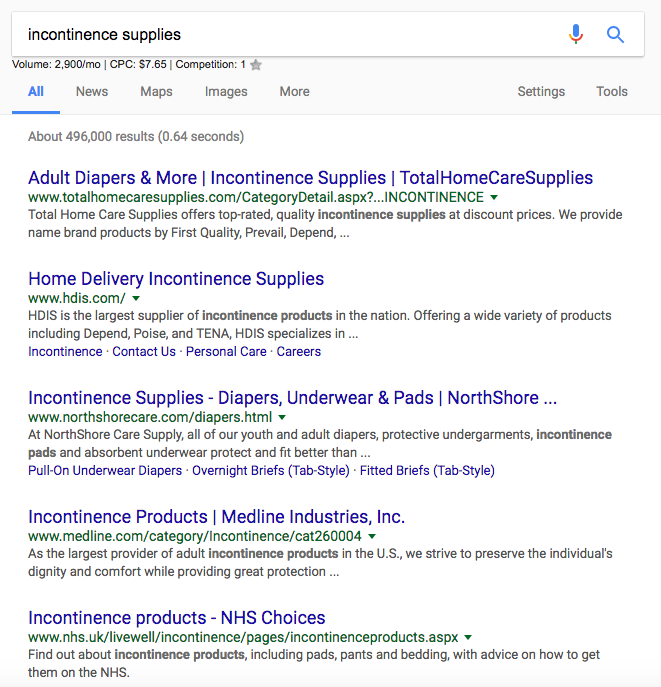
Category competitors include sub-pages of big content assets, such as www.domain.com/guides or www.domain.com/glosary, with linking chapters or definitions beneath.
Use the Prefix level feature of Ahrefs site explorer to see all links pointing to a certain section/category of a competitor’s site (for example, www.domain.com/productcategory).
Maximize the aforementioned link building tool by identifying generic and category competitors with their “Competing Domains” or “Competing pages’ features. It shows sites or pages ranking for similar keywords to your domain.
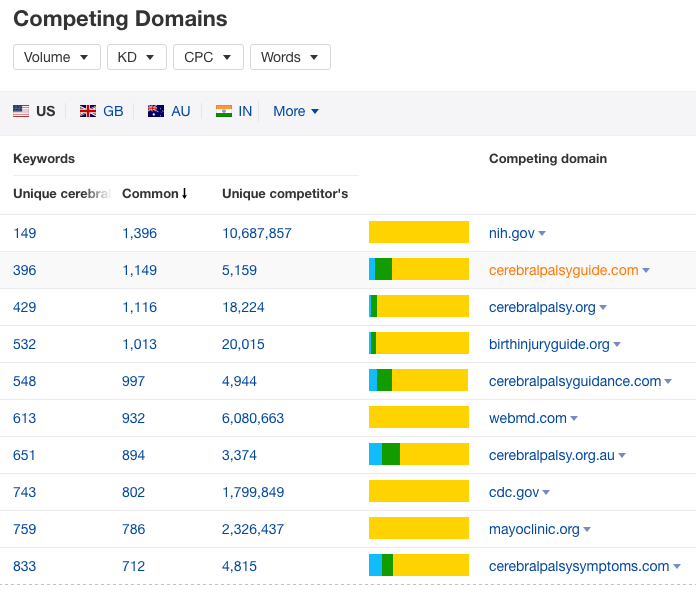
Tip: Remove large domains and exact-match domains from your lists. These sites may add noise to your analysis. For the example above, remove sites like nih.gov and cdc.gov.
3. Content asset-specific competitors
These information-driven pages include web pages competing for “content asset” keywords (non-commercial industry terms).
For example, this “substance abuse guide for parents” competes with the following content pieces:
How to Find Competitors Backlinks
1. Use Co-Citation Analysis
One strategy I’ve been using quite often is prioritizing link opportunities based on the number of competitors they’ve linked to.
Coined by Garrett French, co-citation is when a single web page links to two or more related domains.
Co-citation analysis is a process of organizing domains or URLs by the number of outbound links to sites relevant to your content/site (for this discussion to your competitors).
The logic behind this is that if a page has linked to three or even five relevant sites, they’re much more likely to add a link to your content than a page linked to just one related page.
Here are the different options to execute co-citation analysis on your competitors’ backlinks:
Citation Labs Co-Citation Tool
This web product is freely available for Windows users. Here’s a tutorial video that walks you through how to use it.
Unfortunately, the tool only works for Windows users. For those who are using Mac, proceed to the second option.
Manual Co-Citation Analysis
If you haven’t grabbed a list of all your competitors’ backlinks, you can do so with Ahrefs or MajesticSEO.
It will leave you with several CSV files you want to combine into a big Excel spreadsheet.
For Mac users, the “Terminal” tool can merge all CSVs into one database.
Go to Applications – Terminal.
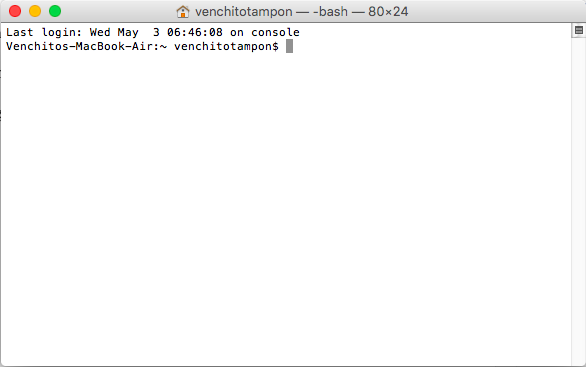
Pull up your Desktop by typing the following command and then pressing your “enter” key button: cd ~/Desktop (make sure all your CSV files are located in the same folder on Desktop).
Type the command to open the folder on your desktop containing all of your CSV files and press the “enter” button again:
For example, my folder is called “NetAddictionCompetitors” so I type this command: cd NetAddictionCompetitors
Finally, type in the following command to automatically merge all of the CSV files in that folder.
cat *.csv >merged.csv


You can read this quick tutorial by Trent of Watchman Advisors.
Remove unnecessary columns from the list and only remain the column for “Linking Pages”.
Next is to transfer it to a Google Spreadsheet.
Then create new columns for “Domains” and “Occurrences”.
Include this formula below to strip off the page URL to its root domain.
=IF(ISERROR(FIND(“//www.”,A2)), MID(A2,FIND(“:”,A2,4)+3,FIND(“/”,A2,9)–FIND(“:”,A2,4)–3), MID(A2,FIND(“:”,A2,4)+7,FIND(“/”,A2,9)–FIND(“:”,A2,4)–7))
Assuming the Linking page is on A2, this would be the formula (to be put into the B2 cell).
For the “Occurrences” column, insert this formula to check how many times a certain page URL has occurred in the spreadsheet.
=COUNTIF(B:B,B2)
Now you can sort the “Occurrences” column by descending order to display the highest to lowest number of occurrences.
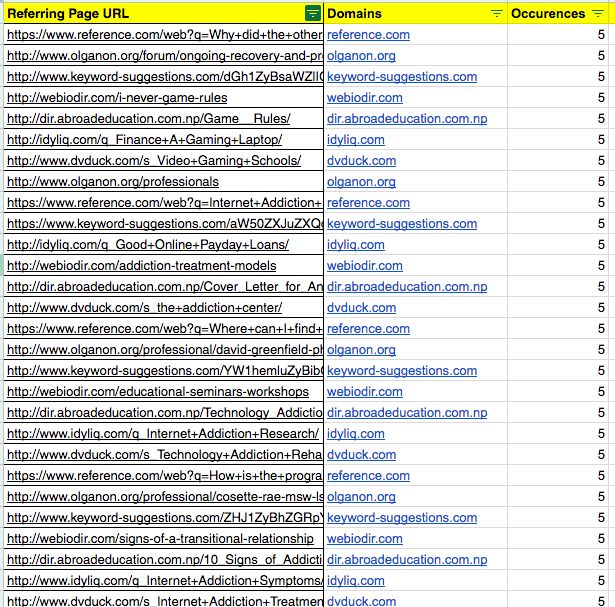
Resource pages, for example, linking to three or more of your competitors, have a higher probability of linking to your content when you pitched for link requests.
You are authorized to use their link intersect tool for link builders with a higher subscription plan than the Lite plan of Ahrefs.
Simply follow the process shared by Tim Soulo in this tutorial video:
2. Determine Link Approaches of Competitors
After getting backlinks from co-cited pages, the next thing you can do is analyze how your competitors were able to get links in your industry.
Check link types of their inbound links to assess their previous and current link building strategies.
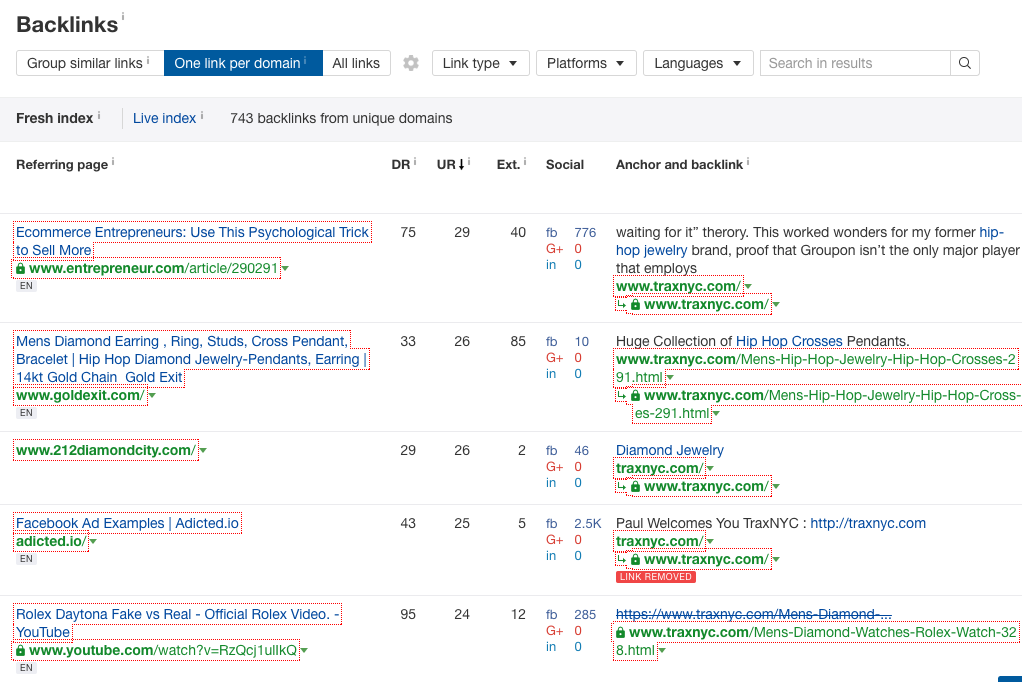
Filter links based on the following link acquisition approach:
- Submission-based (niche-specific and generic directories)
- Link requests (resource pages on .edu/.gov and other non-commercial pages)
- Content contribution (guest posts, sponsored posts)
- Earned media (interviews, references/citations)
You can quickly determine the linker’s approach by identifying “clues” on the page/site.
Submission-based
Submission-based websites like directories normally have “submit your page” or “submit your site” pages on their navigation menus.
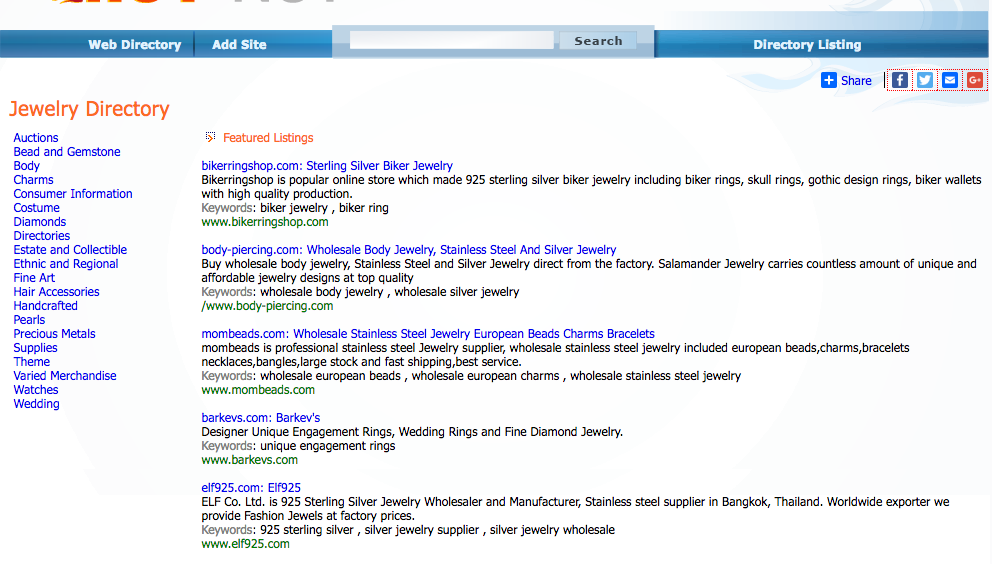
Supplying the webmaster with details about your website/blog is a requirement to get listed on their pages.
Link-request
Several factors that may indicate if a linking page (mostly in the form of a resource page) has been approached by a link request pitch are:
- Non-commerciality of external links – information-driven pages normally can be requested to be linked from a resource page.
- Affiliations – a professional organization may include a website in its resource page if it has been associated with/has been part of a certain group.
- Fresh prospects – resource pages with recently updated sections on the page are more receptive to link requests (and have higher chances of linking).
Here are a few examples of link-request resource pages.
Non-commerciality of external links
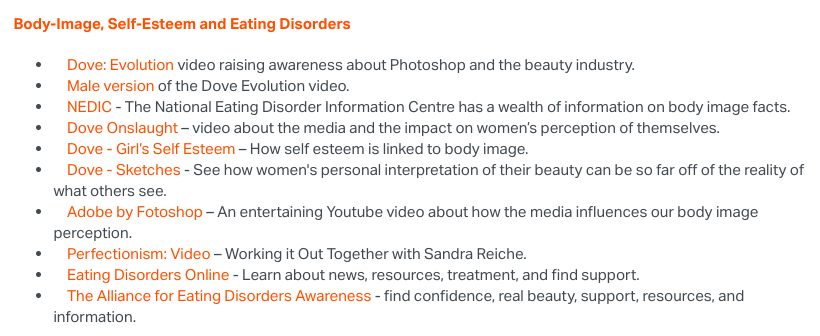
Affiliations
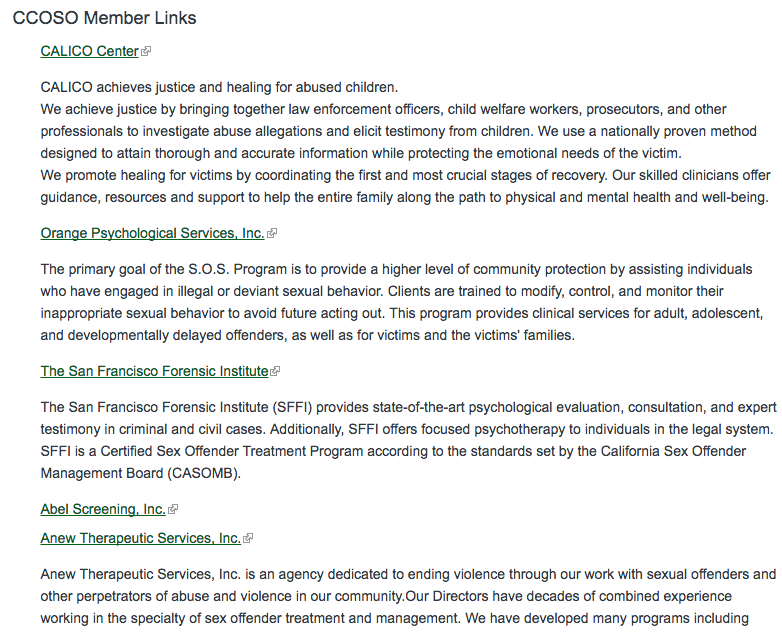
Fresh prospects

Tip: Use QuixApp lastmod command to check the page’s last modified date.

The fastest way to determine if you can obtain a link from a resource page is by checking the closest relevant section on the page and the types of links included in that section.
For example, a video gaming addiction for parents guide can be the best fit (highly relevant) in Mental Health and Addiction section.

Tip: Use inbound/outbound and followed/no-followed overlay features of Mozbar to quickly check links’ attributes and point sources.
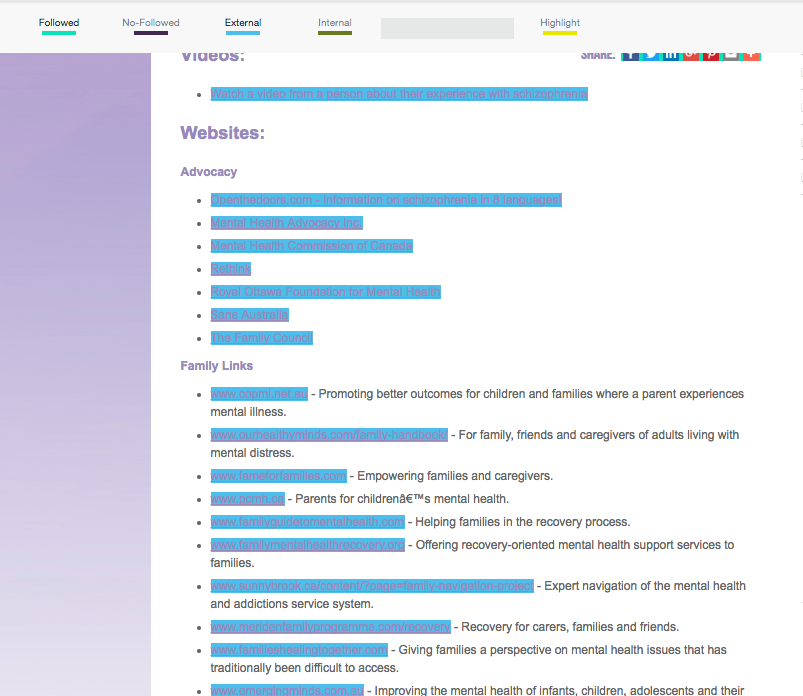
Content contribution
This is probably the easiest approach to spotting on, given that you only have to check if there is an author’s description with a link to another website (not the guest blog site itself) contextually placed within the blog post or author box.
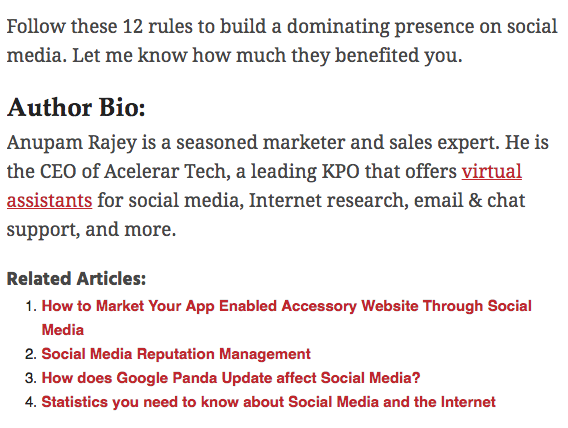
This could be in the form of a sponsored article or a non-paid guest post.
Earned media
Several things that may indicate if a link of a competitor has been earned organically:
- Exclusive interviews (e.g. podcast and individual interviews).
- Recommend lists of industry personalities, groups, brands, or tools
- Serves as a reference for further reading (voluntarily given)
- Link Roundups (group interview)
- Mentioning the brand to check as additional sources
Exclusive interviews (e.g. podcast and individual interviews).

Recommend lists of industry personalities, groups, brands, or tools
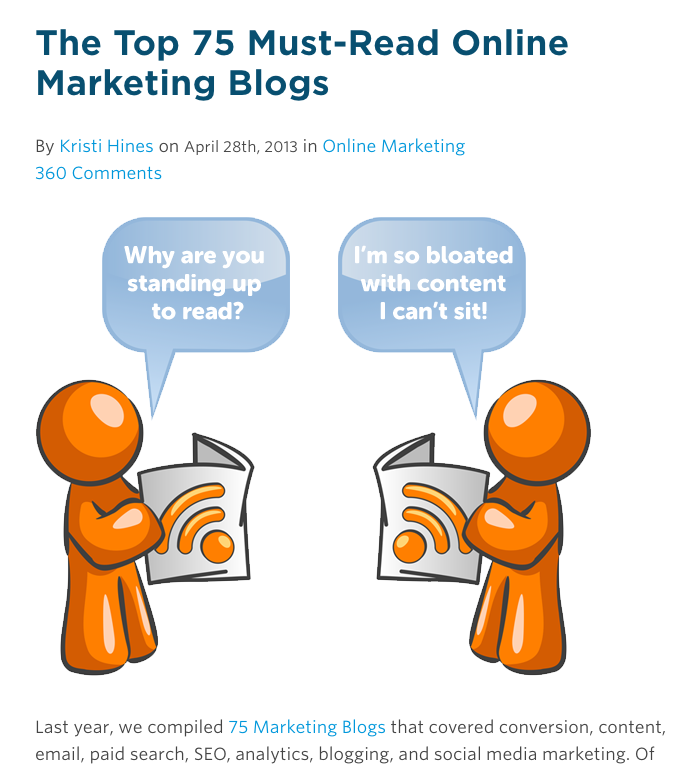
Serves as a reference for further reading

Roundups (group interview)

Mentioning the brand to check as additional sources
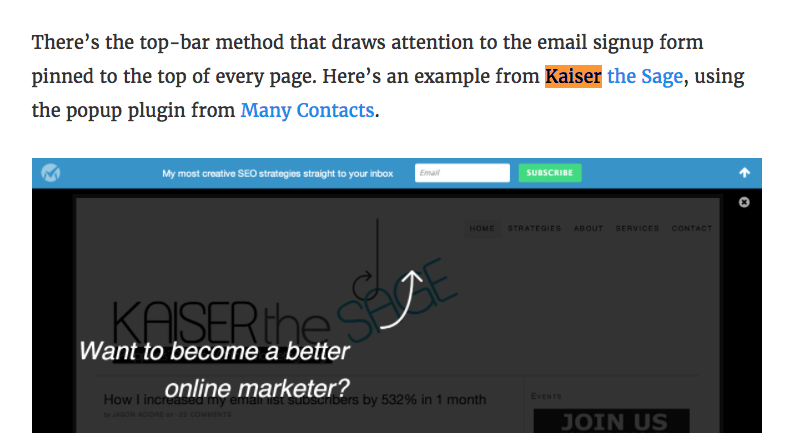
While not all links with the aforementioned indicators are perfectly naturally earned (i.e. interviews being pitched to a future guest), most of them couldn’t be replicated easily by requesting links.
3. Expand Link Lists with a Deeper Analysis of Link Opportunities
Creating a huge list of existing links of your competitors is the first surface level of link opportunities.
Expand your database of link targets by taking a deeper look at their other important link data, such as:
High-performing linkable pages
It is best to determine what content formats have proven effective for your competitors in garnering relevant links.
Sort the top pages of your competitor’s site by link growth (best by links feature of Ahrefs) to see what pages have received the highest number of inbound links.
This approach can help you get insights on linkable content formats your competitor has been focusing on – which you can replicate if you’re initiating a new content-based link acquisition strategy for your clients.
For example, WineFolly has consistently found success in obtaining links using infographics in the wine industry.
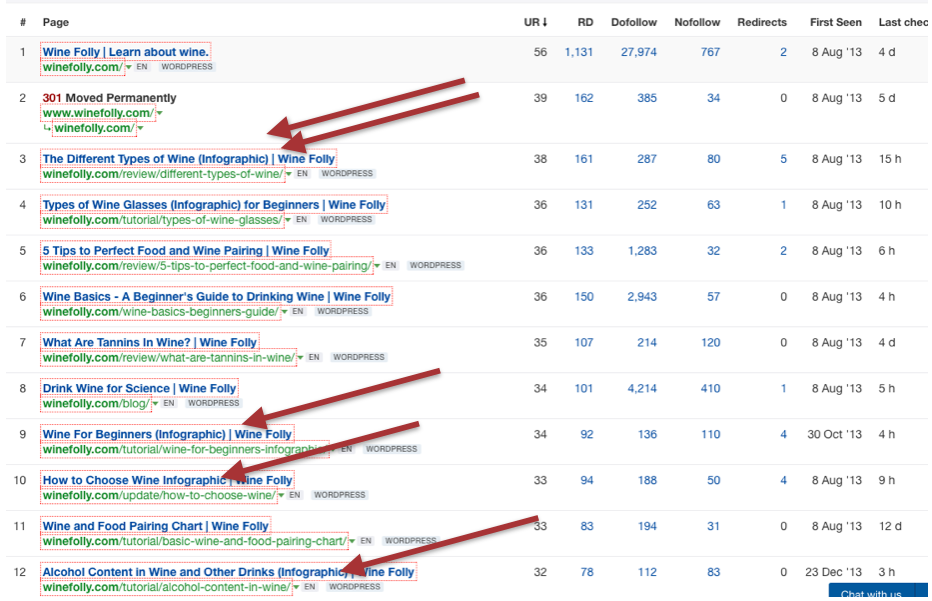
You don’t necessarily have to reinvent the wheel always, particularly for new websites you’re trying to build links to.
Pro tip: Always be on the lookout for your competitors’ broken pages with lots of inbound links. Check if you can create a version of the page and do proper outreach to linkers of dead content.
Further reading: How to Build Backlinks Using Your Competitors’ Broken Pages
Recurring backlink sources
Websites that constantly send targeted traffic to a website through recurring backlinks (placed within different linking pages) are strong signals that search engines can use to reward them with better rankings.
Export link data of competitors and sort it by highest to lowest recurring backlinks (Total Backlinks column).
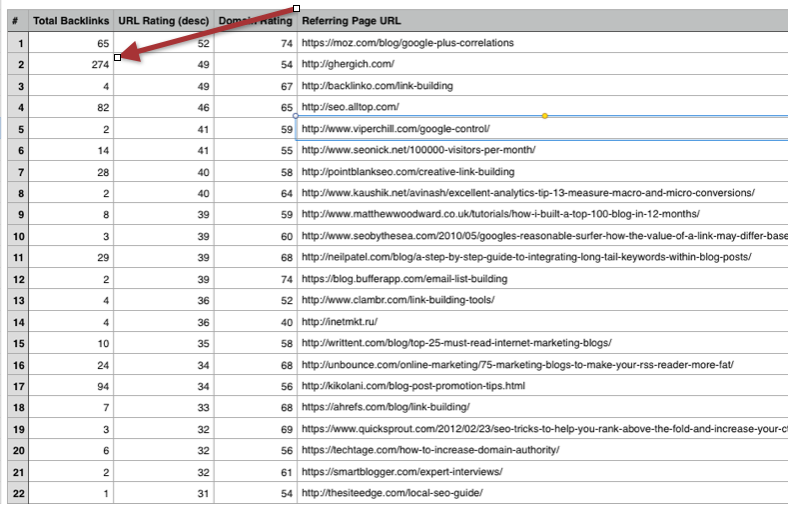
Repeat this process for all your competitors to surface regular linkers in your industry that you should start building relationships with.
Competitor Backlinks Frequently Asked Questions
How do you see competitor backlinks?
To see competitor backlinks, analyze their website URL using a backlink checker tool. This will reveal their site’s authority and inbound links. Focus on the external backlinks for the best link opportunities. Additionally, check their popular pages to gain insights into their link-building strategies.
Should you search your competitors backlinks?
Yes, searching your competitors’ backlinks is a reliable way to boost your website’s SEO. By analyzing their best backlinks, you can uncover valuable insights into their SEO strategies and replicate their success for your own site. Competitor backlink research is an effective tactic to improve your search engine rankings and drive more organic traffic.
What is the benefit of competitor backlinks?
Gaining benefits from competitor backlinks is advantageous for your business. It helps you tap into untapped markets and gain insights into your competitor’s customer base and product strategy. Identifying untapped prospects allows you to capitalize on new growth opportunities.
How do you steal backlinks from competitors?
Focus on creating high-quality content, building relationships with other websites, and earning backlinks naturally through guest posting and outreach campaigns. These legitimate methods will help to improve your website’s authority and visibility in the search results.
The Author
Venchito Tampon Jr
Venchito Tampon is a Filipino Motivational Speaker, Corporate Trainer, and a Leadership Speaker in the Philippines. He is the CEO and Co-Founder of SharpRocket, a link building agency. With a decade of experience, Venchito has a proven track record of leading hundreds of successful SEO (link builidng) campaigns across competitive industries like finance, B2B, legal, and SaaS. His expert advice as a link building expert has been featured in renowned publications such as Semrush, Ahrefs, Huffington Post and Forbes. He is also an international SEO spoken and has delivered talks in SEO Zraz, Asia Pacific Affiliate Summit in Singapore, and Search Marketing Summit in Sydney, Australia. Check out his other businesses, Hills & Valleys Cafe, Blend N Sips and Saas Pursuit.
How our LINK BUILDING AGENCY builds 250 links/mo consistently using Predictable Link Building Methodology™…
- Using a SIMPLE and PROVEN system
- Using a SCALABLE strategy
- No private blog networks
- No creepy outreach emails


